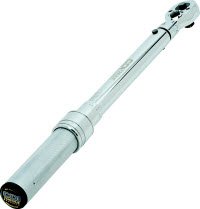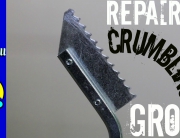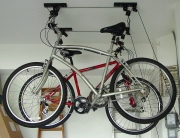October 20, 2015
How to Properly Use a Torque Wrench
Contributed by Ron Burg, ProTorqueTools
You are driving down a moonlit road. The wind from the window hits your face, and an uncontrollable smile erupts as your favorite song begins to play. That smile is quickly flipped upside down as a loud pop is heard, which is then followed by a slight lean in your car. A flat tire spoils your once amazing evening. Changing a tire can be a pain in and of itself, but with the proper tools, it can be less of a nuisance.
When changing a tire, it is extremely easy to over-tighten your lug nuts. This can strip the threads, which will cost you way more money in the long run than even a replacement tire. A torque wrench, however, can help you secure your tire back onto your car easily and correctly. It might be daunting, at first, for the average consumer to buy this professional tool, but, in the long run, it will save you a lot of time, money, and hassle.
Torque wrenches are easy to use, too, but you just have to understand the mechanics behind them. Torque is simply rotational force, and the torque wrench will accurately apply the proper amount of torque to whatever object you need to tighten or fasten.
Finding the Right Level of Torque
First, you need to look for the level of torque that is needed to securely fasten the bolt or nut without over or under-tightening it. In some cases, you can either look at the object to see what the level of torque is in—either N-m, which is Newton Meters, or in lbs., which is pounds per foot. It should be clearly stated in the manual as well.
One thing to be aware of is whether they list the number as maximum level of torque or simply recommended level of torque. If the number is listed as the recommended level of torque, then that is a safe number to set your wrench to. However, if it is listed as maximum number of torque, simply reduce that number by 15 to 20 percent.
Setting Your Torque Wrench
Once you have the proper number, you will then adjust the level of your torque wrench by moving the base to the appropriate number that corresponds to the level. Once you have properly calibrated your torque wrench, you are ready to use it.
Tightening the Bolt
Next, securely fashion the wrench to the nut or bolt. You can then begin to tighten until you hear a loud click. You will then slowly tighten a little more until you hear another click. After that final click, you are done!
Proper Handling of Torque Wrenches
Torque wrenches are incredibly helpful, but they can also wear out with time, and they do need to be serviced to ensure maximum precision. Also, be careful not to drop the torque wrench, because that will throw off its calibration.
If you have any questions on which torque wrench would work best for you, talk to the experts at ProTorqueTools.com!
See Jane Drill, Copyright 2015, All Rights Reserved







Leave A Comment